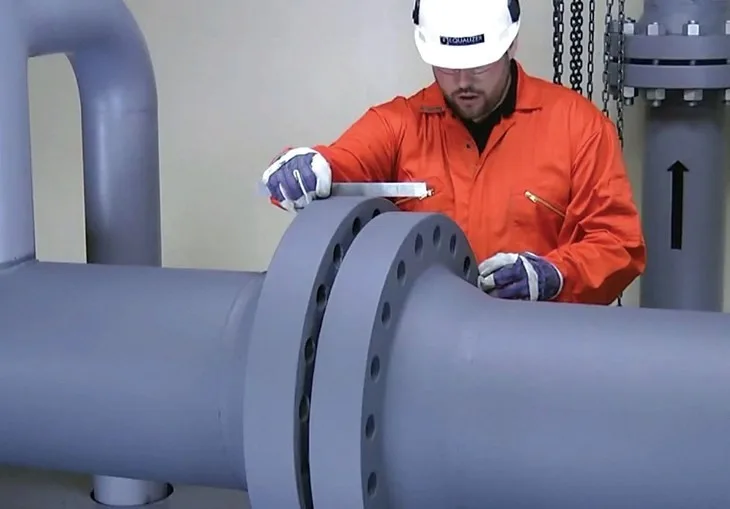INTRODUCTION FOR PIPING, VALVES & FITTINGS:-CURRENT AND COMMON ENGINEERING PROBLEMS & THEIR SOLUTIONS IN INDUSTRY
Piping, valves and fittings have their fair share of engineering problems in the industry.
The said problems could be classified into:-
- Problems which could be identified and solved immediately, with little or no financial implications or loss in production and a drop in quality levels;
- Problems which could be identified and cannot be solved immediately, with little or no knowledge of its implications;
- Problems which recur frequently and cannot be solved permanently etc;
Some of the reasons for these are due to:-
- Incompetent staff;
- A vast variety of equipment;
- Many moving (sliding, reciprocating, rotating) components etc.
COURSE OVERVIEW
This course is industry designed, to provide a broad understanding of the improvement methodology, concepts, and process. The methodology is presented with case studies and examples drawn from service, business process and engineering applications. The integration of manufacturing and maintenance is also addressed. With a heavy practice orientation, as much as a third of your time will be spent working through interactive practical exercises and assessments.
COURSE OBJECTIVES
This training program is designed to provide an understanding of engineering-related problems related to industry globally and a clear sense of what is required to effectively structure, establish measurements and solve problems. Participants will learn the goals and deliverables behind the solutions. Methodology as well as the most commonly used tools within each phase will be discussed. Participants will also learn how to support a problem-solving initiative within their organization.
LEARNING OUTCOMES
On successful completion of this course, the participant should be able to:-
- Understand the benefits and implications of piping, valves and fittings engineering problem-solving program, and relate the concepts to the overall business mission and objectives.
- Think about his/her organization as a collection of processes, with inputs that determine the output.
- Use the concept of piping, valves and fittings engineering problem-solving to evaluate the capability of a process or organization.
- Recognize the engineering problem-solving model used to improve processes.
- Recognize the organizational factors that are necessary groundwork for a successful engineering problem-solving program.
- Integrate the piping, valves and fittings engineering problem-solving program effort with other process improvement initiatives.
METHODOLOGY
- The latest educational methods and strategies will be utilized.
- The course is designed to maximize delegate participation.
- Questions and answers are encouraged throughout and at the daily wrap-up sessions. This gives participants the opportunity to discuss with others and the presenter their specific problems and appropriate solutions.
- The course shall be conducted through lectures, case studies, group discussions and exercises to reinforce participants’ learning.
COURSE FORMAT
The course consists of formal content presentation interspersed with content quiz sessions. The presenter’s style involves intensive participant participation.
COURSE CONTENT
DAY 1
WATER PIPING SYSTEMS
- Estimating water demand
- Why Plumbing Codes?
- Estimating Potable Water Demand
- What is a Fixture Units Count?
- Hunter’s Method of Estimating Loads in Plumbing Systems
- Fixture Unit – Flow Relationship
- Residential Demand Estimating Procedure
- Procedures for Estimating Non-Residential Demands
- Water distribution system
- Pressures
- Flow Pressure vs Static Pressure
- Pressure vs Flow
FUNDAMENTALS OF PIPE SIZING
- Probability Flow Rates and Pipe Sizing
- Pipe Materials
- Sizing Auxiliaries
BOOSTER PUMP SIZING
- Calculating Total Dynamic Head
- Other important pumping considerations
- Storage Tank
- Expansion Tank
PIPE FITTINGS
- Pressure ratings,
- Schedule number,
- Sizing
- Finishes
- Applications of codes,
- Regulations
- Manufacturer’s specifications
- Identify types
- Symbols
- Fabricate, install and service fittings.
- Identify markings
DAY 2
VALVE FUNCTIONS AND BASIC PARTS
- Valve Body
- Valve Bonnet
- Valve Trim
- Valve Actuator
- Valve Packing
TYPES OF VALVES
- Gate Valves
- Gate Valve Disk Design
- Gate Valve Stem Design
- Gate Valve Seat Design
- Globe Valves
- Globe Valve Body Designs
- Globe Valve Disks
- Globe Valve Disk and Stem Connections
- Globe Valve Seats
- Globe Valve Direction of Flow
- Ball Valves
- Ball Valve Stem Design
- Ball Valve Bonnet Design
- Butterfly Valve Seat Construction
- Butterfly Valve Body Construction
- Butterfly Valve Disk and Stem Assemblies
- Needle Valve Body Designs
- Check Valves
- Swing Check Valves
- Tilting Disk Check Valves
- Lift Check Valves
VALVE ACTUATORS
- Introduction
- Manual, Fixed, and Hammer Actuators
- Electric Motor Actuators
- Pneumatic Actuators
- Hydraulic Actuators
- Self-Actuated Valves
- Solenoid Actuated Valves
- Speed of Power Actuators
- Valve Position Indication


